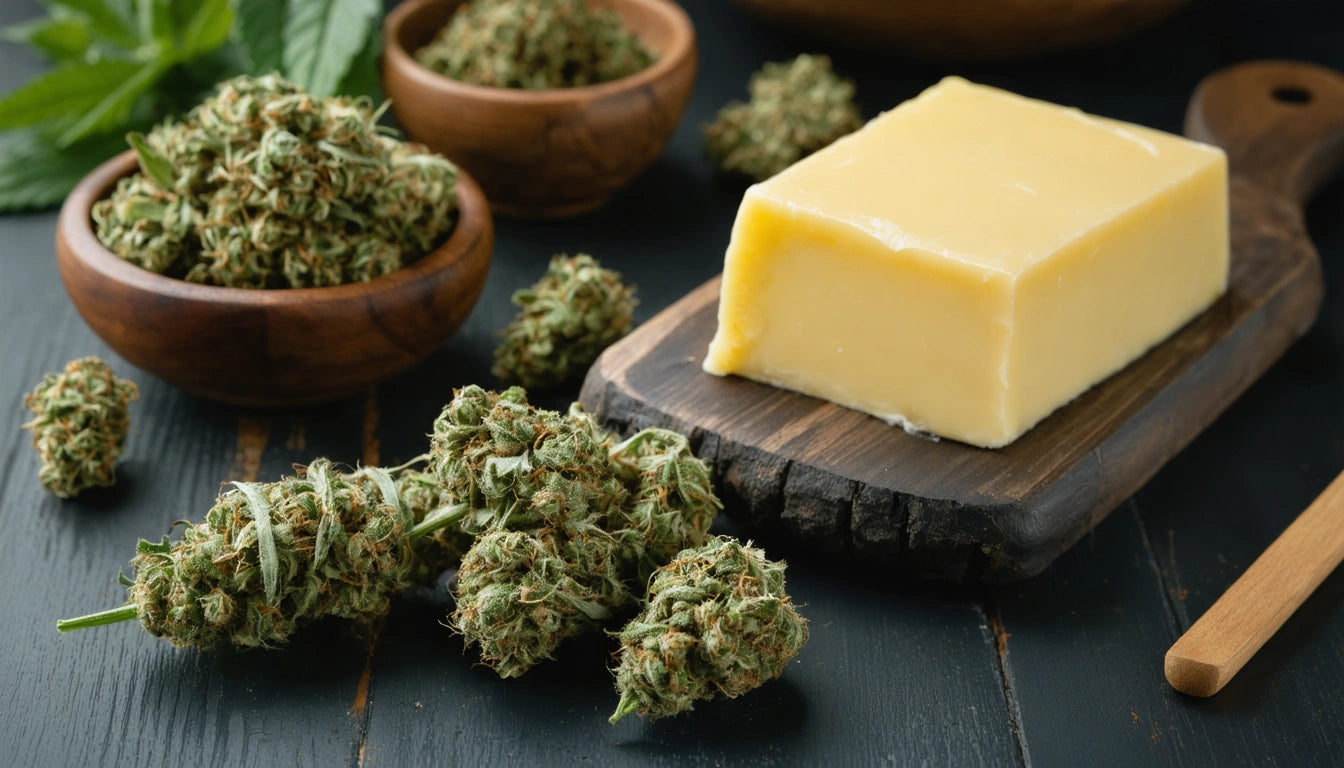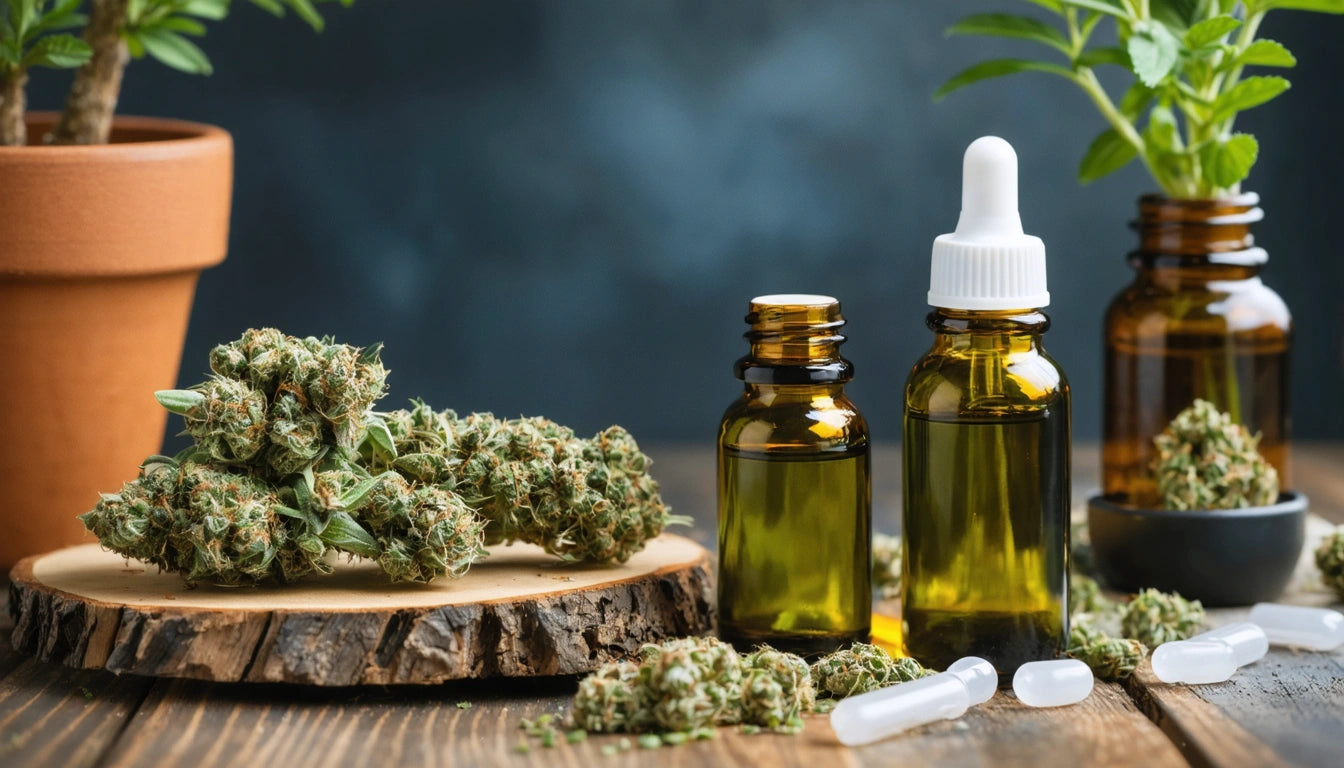How to Make and Use Cannabutter: A Comprehensive Guide on Ingredients, Measurements, and Costs
Cannabutter serves as the foundation for countless cannabis edibles, from classic brownies to gourmet cuisine. Understanding the proper ratios, measurements, and costs associated with making cannabutter can help you create consistent, potent, and economical infusions. This guide answers common questions about cannabutter preparation and usage to help you achieve reliable results.
Cannabutter Basics: What You Need to Know
Cannabutter is simply butter infused with activated cannabis. The process involves decarboxylating cannabis (heating it to activate THC) before infusing it into butter. For best results, you'll need:
- Cannabis flower (amount varies based on desired potency)
- Unsalted butter
- Water (optional, for certain methods)
- Cheesecloth or fine strainer
- Accurate kitchen scale
- Lecithin (optional, but beneficial)
Using precise digital scales for measuring your cannabis is crucial for consistent potency in your final product. Even small variations in flower weight can significantly impact the strength of your cannabutter.
Weed to Butter Ratios: Finding the Perfect Balance
How Much Weed for Cannabutter?
The ratio of cannabis to butter depends on your desired potency. Common ratios include:
- Mild potency: 3.5g (1/8 oz) of cannabis per 1 cup (8 oz) of butter
- Medium potency: 7g (1/4 oz) of cannabis per 1 cup of butter
- High potency: 14g (1/2 oz) of cannabis per 1 cup of butter
For those wondering how much cannabutter 7g makes, typically 7 grams of cannabis will infuse one cup (8 oz) of butter at medium potency. The THC content of your starting material also affects final potency, so consider the strain's strength when determining your ratio.
Measuring Cannabutter for Recipes
How Much Cannabutter for Brownies?
Most brownie recipes call for between 1/2 cup to 1 cup of cannabutter. A standard boxed brownie mix typically requires about 1/2 cup (4 oz) of cannabutter. When determining how much cannabutter in brownies, consider:
- A typical 9x9 inch pan of brownies contains 9-16 servings
- Using 1/2 cup of medium-potency cannabutter would provide approximately 5-10mg THC per serving (depending on your cannabis potency and number of servings)
For more precise dosing, check out our complete guide to making and using cannabutter, which includes detailed dosage calculations.
Cost Considerations When Making Cannabutter
How Much Does Cannabutter Cost?
The cost of homemade cannabutter depends primarily on your cannabis prices:
- Using 7g of cannabis at $10/gram = $70 for cannabis
- 1 cup of quality butter = $3-5
- Optional lecithin = $1-2 per batch
This creates approximately 8oz of cannabutter at a cost of $75-80, or about $9-10 per ounce. Commercial cannabutter, where available in legal dispensaries, typically costs $20-30 per 4oz container, making homemade versions more economical for regular users.
For those wondering how much is 4oz of cannabutter in retail settings, expect to pay between $20-30 at dispensaries, depending on potency and location. Learn more about where to buy cannabutter legally if you prefer not to make your own.
Storing and Preserving Your Cannabutter
Proper storage extends the shelf life of your cannabutter:
- Refrigerated: 2-3 weeks in an airtight container
- Frozen: Up to 6 months
Consider portioning your cannabutter into ice cube trays before freezing for easy dosing. Each cube will contain a standardized amount, making recipe preparation simpler. For detailed preservation techniques, see our article on best practices for storing cannabutter.
Practical Applications and Recipe Ideas
How Much Cannabutter is Needed for Edibles?
Different edibles require varying amounts of cannabutter:
- Cookies: 1/2 cup for a batch of 24 cookies (approximately 2-3mg THC per cookie with medium-potency butter)
- Brownies: 1/2 cup for a 9x9 pan (approximately 5-10mg THC per serving)
- Pasta sauce: 2-3 tablespoons for 4 servings (approximately 8-12mg THC per serving)
For recipes and inspiration, explore our ultimate guide to cannabutter recipes.
How Much Lecithin for Cannabutter?
Lecithin acts as an emulsifier, improving cannabinoid absorption and extending shelf life. The general guideline is:
- 1 tablespoon of lecithin per cup of oil/butter
- Sunflower lecithin is preferred over soy lecithin for better absorption
Add lecithin during the infusion process for best results. It helps bind the cannabinoids to the fat molecules, potentially increasing potency by 10-15%.
Maximizing Your Cannabutter Investment
To get the most value from your cannabutter:
- Use higher quality cannabis for better flavor and potency
- Save stems and trim for secondary infusions
- Decarboxylate thoroughly to maximize THC activation
- Store properly to prevent degradation
- Use precise measurements for consistent dosing
Understanding how much weed in cannabutter affects potency allows you to adjust recipes to your tolerance and needs. For beginners, start with lower potency and smaller serving sizes, gradually increasing as you become familiar with your personal response to edibles.
By mastering the fundamentals of cannabutter preparation, measurements, and usage, you can create consistent, enjoyable edibles while managing costs effectively. Whether you're making a simple batch of brownies or exploring gourmet cannabis cuisine, these principles will help you achieve reliable results every time.











Leave a comment
All comments are moderated before being published.
This site is protected by hCaptcha and the hCaptcha Privacy Policy and Terms of Service apply.